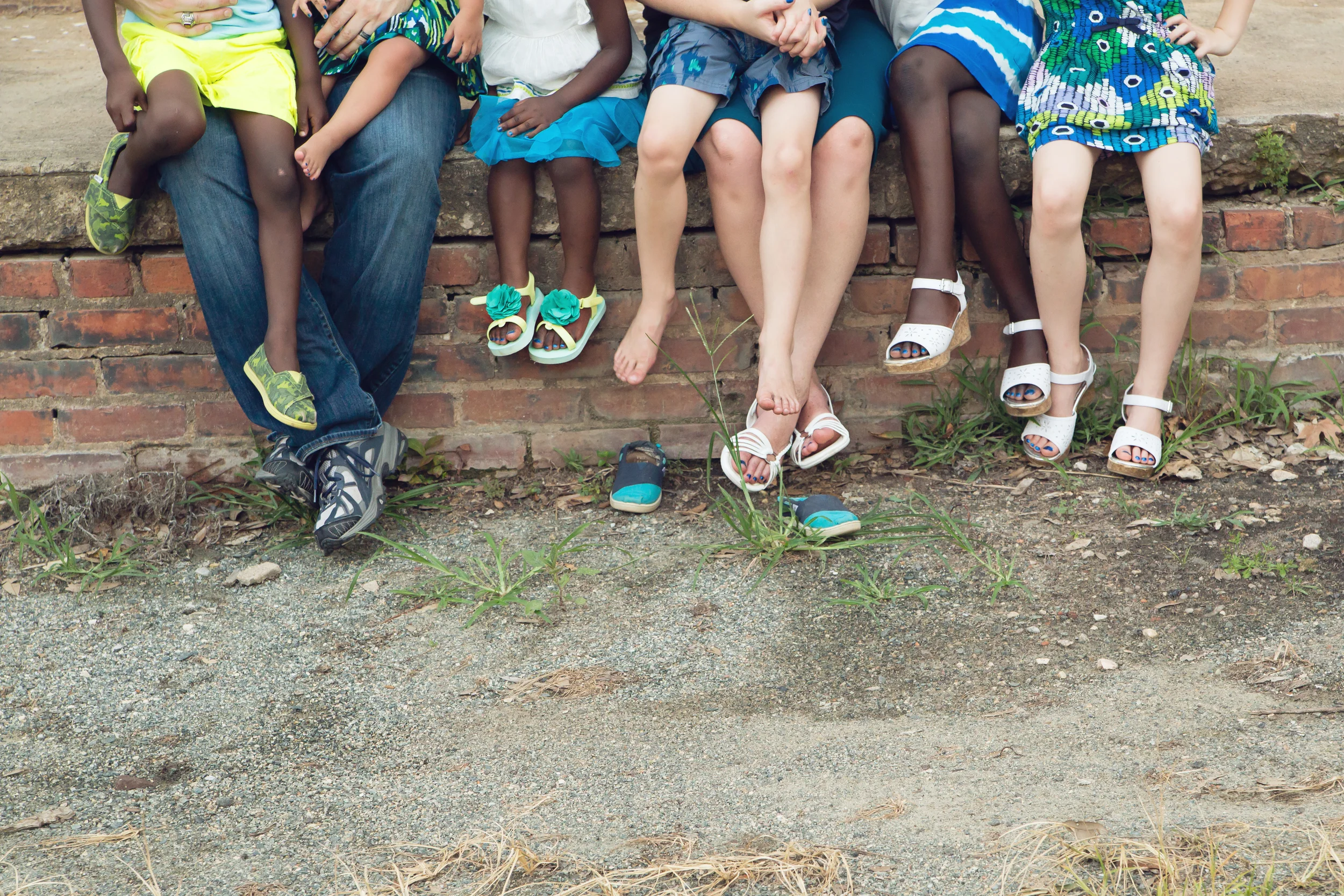our matching grant from Lifesong {or, how you can double donations toward bringing our precious ones home!}
/
One big difference between this adoption and our last one is summed up in one word: GRANTS!
Zoe's adoption was completed without an agency, which required more legwork on our end and more research to make sure everything was ethical. Not having an agency reduced some of our costs, but it also made us ineligible for grants. (Adoption grant organizations uniformly require that adoptive families use accredited agencies.)
This time, we applied for several, and we're waiting to hear back on most. One, from the Sea of Faces Foundation, was awarded to us last week (woohoo!), and we just got a call today about a $2,500 matching grant from Lifesong for Orphans. In other words, if we raise $2,500, then Lifesong will grant another $2500, for a grand total of $5000.
Would you consider making a donation to help us get all of the matching funds?
Before I explain how to give, let me explain - especially for those of you who are new to the blog - why you might consider giving.
Here's how you can do so. Via mail, send your donation to Lifesong directly (a check written to "Lifesong for Orphans" with "3782 Dingle" in the memo line) to Lifesong for Orphans, PO Box 40, Gridley, IL 61744. Or use the Paypal button below.
Zoe's adoption was completed without an agency, which required more legwork on our end and more research to make sure everything was ethical. Not having an agency reduced some of our costs, but it also made us ineligible for grants. (Adoption grant organizations uniformly require that adoptive families use accredited agencies.)
This time, we applied for several, and we're waiting to hear back on most. One, from the Sea of Faces Foundation, was awarded to us last week (woohoo!), and we just got a call today about a $2,500 matching grant from Lifesong for Orphans. In other words, if we raise $2,500, then Lifesong will grant another $2500, for a grand total of $5000.
Would you consider making a donation to help us get all of the matching funds?
Before I explain how to give, let me explain - especially for those of you who are new to the blog - why you might consider giving.
- It's not about us or our family. This is about a family in Africa, three siblings to be exact, who live in an orphanage in the fallout from the AIDS epidemic in their country. They were going to be separated in hopes of finding families sooner when a friend alerted us to their need. Your donation will help those three out of their orphanage and into a family... our family!
- We adopted Zoe and are adopting again because children matter. I wrote about our reasoning and meaningful verses here. If anything ever happened to me and Lee, we would want our children to grow up in a family instead of a facility.
- We're not rich. Well, we are rich in Christ, whose sacrifice on the cross allowed us to be adopted into the family of God. But we don't have the kind of money needed to fund the adoption of four children in less than two years. Zoe's adoption cost $25,000 in total, and this one will cost $40,000 in all.
- HIV shouldn't be a death sentence, but it often is for orphans. One of the siblings we're adopting is HIV+. We have written here, here, here, and here about what that means for us and why we said yes, but in short: HIV can be treated, and children with HIV can live normal lives. That is, if they have access to medical care and a stable environment in which their medications are given twice a day as needed.
Lifesong for Orphans is a non-profit Christian ministry dedicated to help meet the needs of orphan children around the world, and to obey God’s call to “visit the fatherless…in their affliction” (James 1:27). With over 147 million orphans worldwide, Lifesong seeks to mobilize the Body of Christ to love and care for orphans. Lifesong serves families, churches and orphans through adoption funding. Additionally, Lifesong brings joy and purpose to orphans globally in seven countries and domestically through foster care initiatives. Please visit our website (www.lifesongfororphans.org) for more information.Thanks for considering joining with us to provide a family for the three darling ones in Uganda who we love already, even though we haven't met them yet.
Lee and Shannon have sensed God’s call to care for the fatherless and have joyfully stepped out in faith and obedience to adopt 3 siblings from Uganda. As you may already know, adoption can cost $25,000-$35,000, and this financial burden prevents many godly families from adopting. Lifesong believes God has called this family to adoption and has committed an Adoption Matching Grant of $2500.00 to help bring these children home.
Funds donated to Lifesong for Orphans will be given to help cover adoption expenses. Lifesong is a 501(c)3 non-profit organization and your gift is tax deductible. 100% of all funds raised will go directly to cover adoption costs--nothing will be taken out for Lifesong for Orphans administrative costs.
In following IRS guidelines, your donation is to the named non-profit organization. This organization retains full discretion over its use, but intends to honor the donor’s suggested use. Individual donations $250 or more and yearly donations totaling $250 or more will receive a tax-deductible receipt. Receipts for donations under $250, will gladly be sent upon request.

























